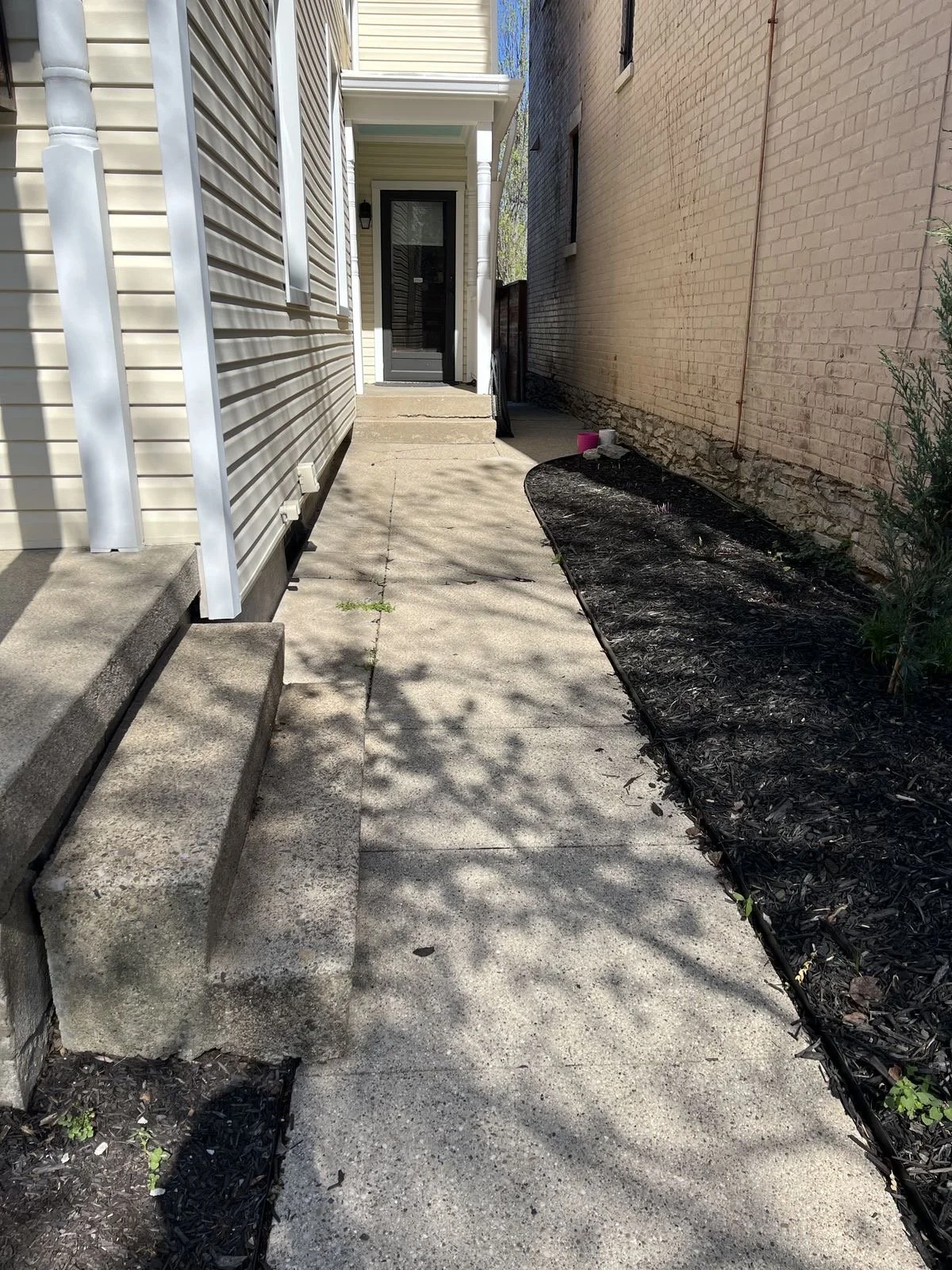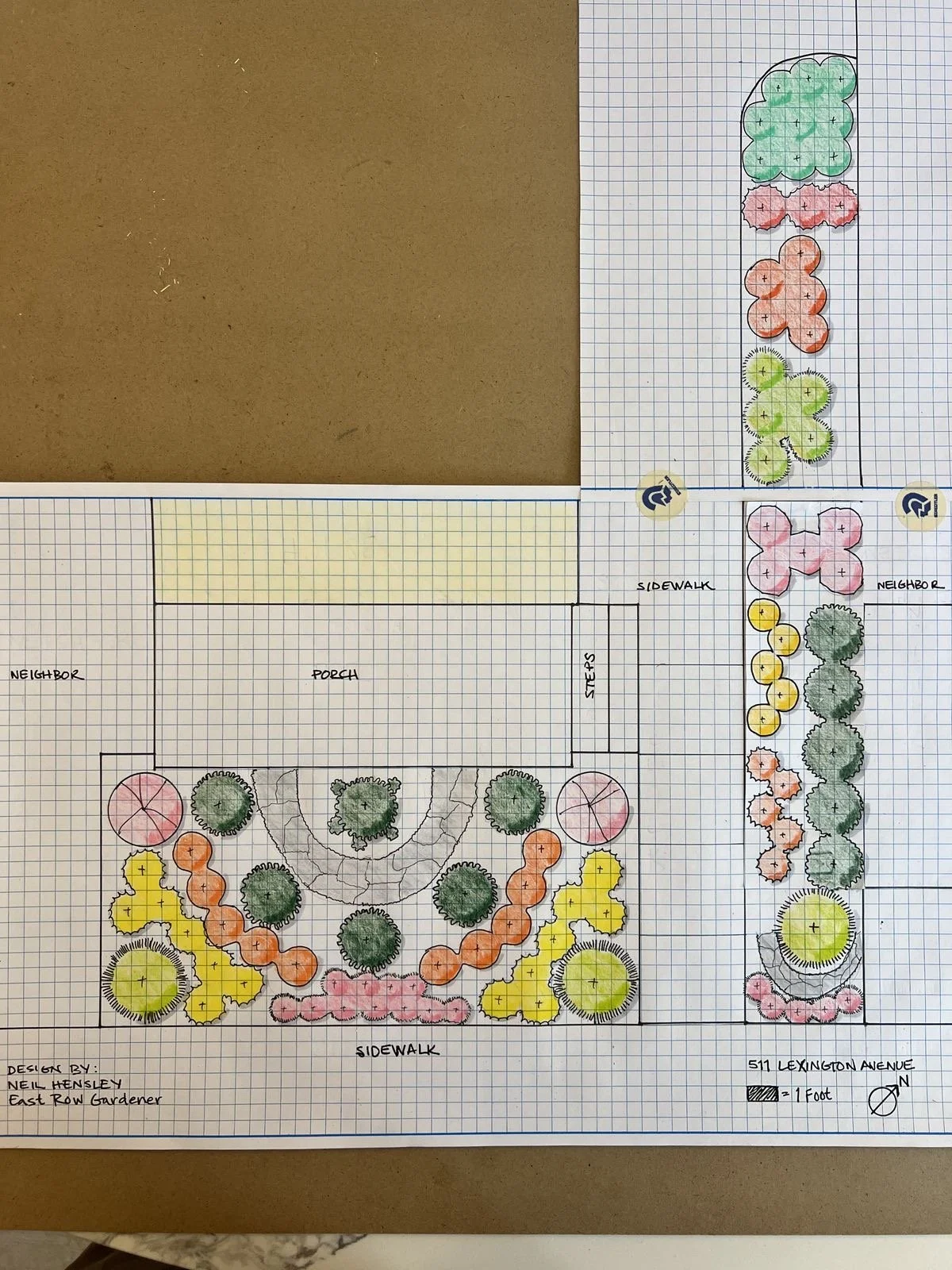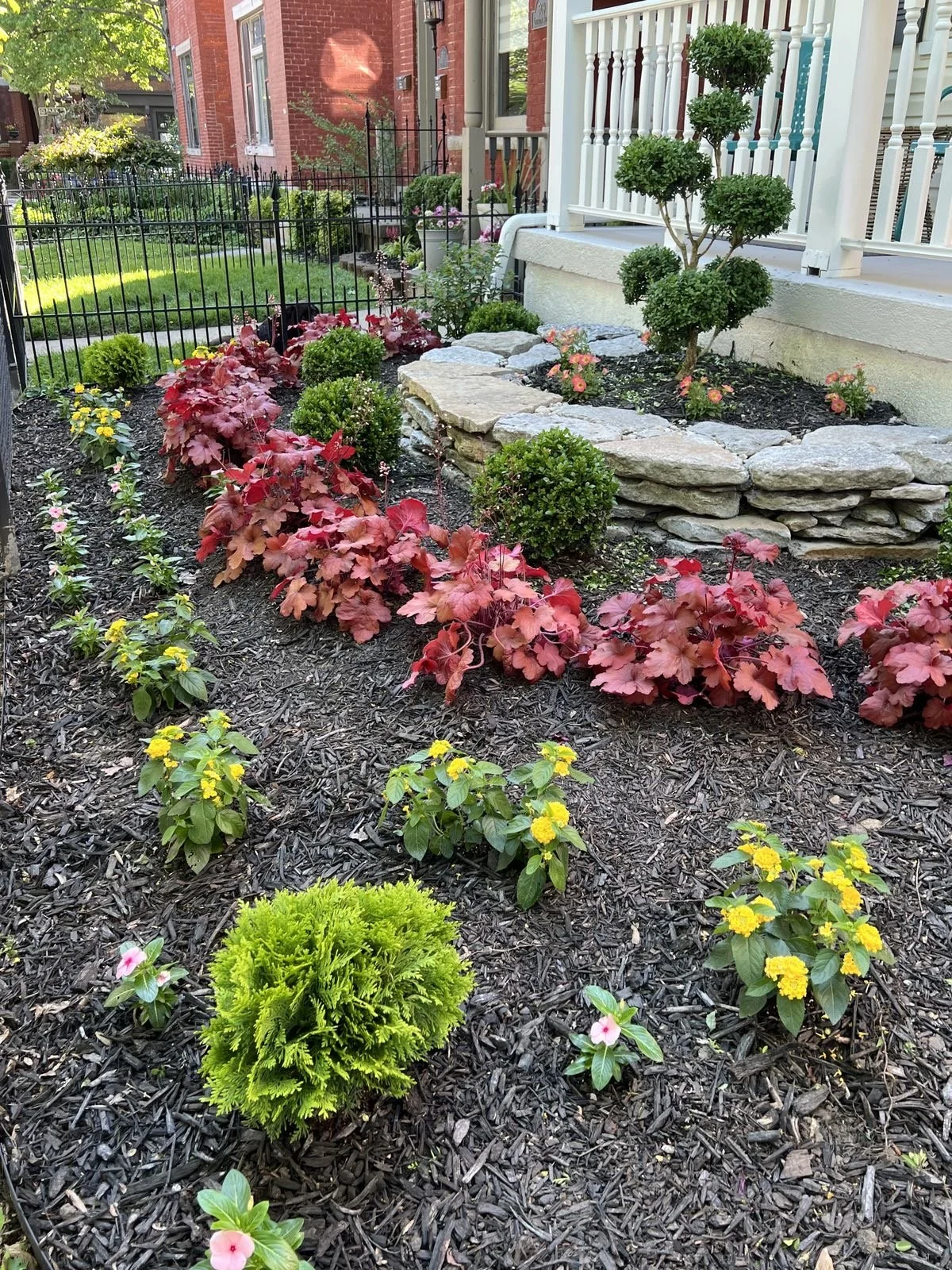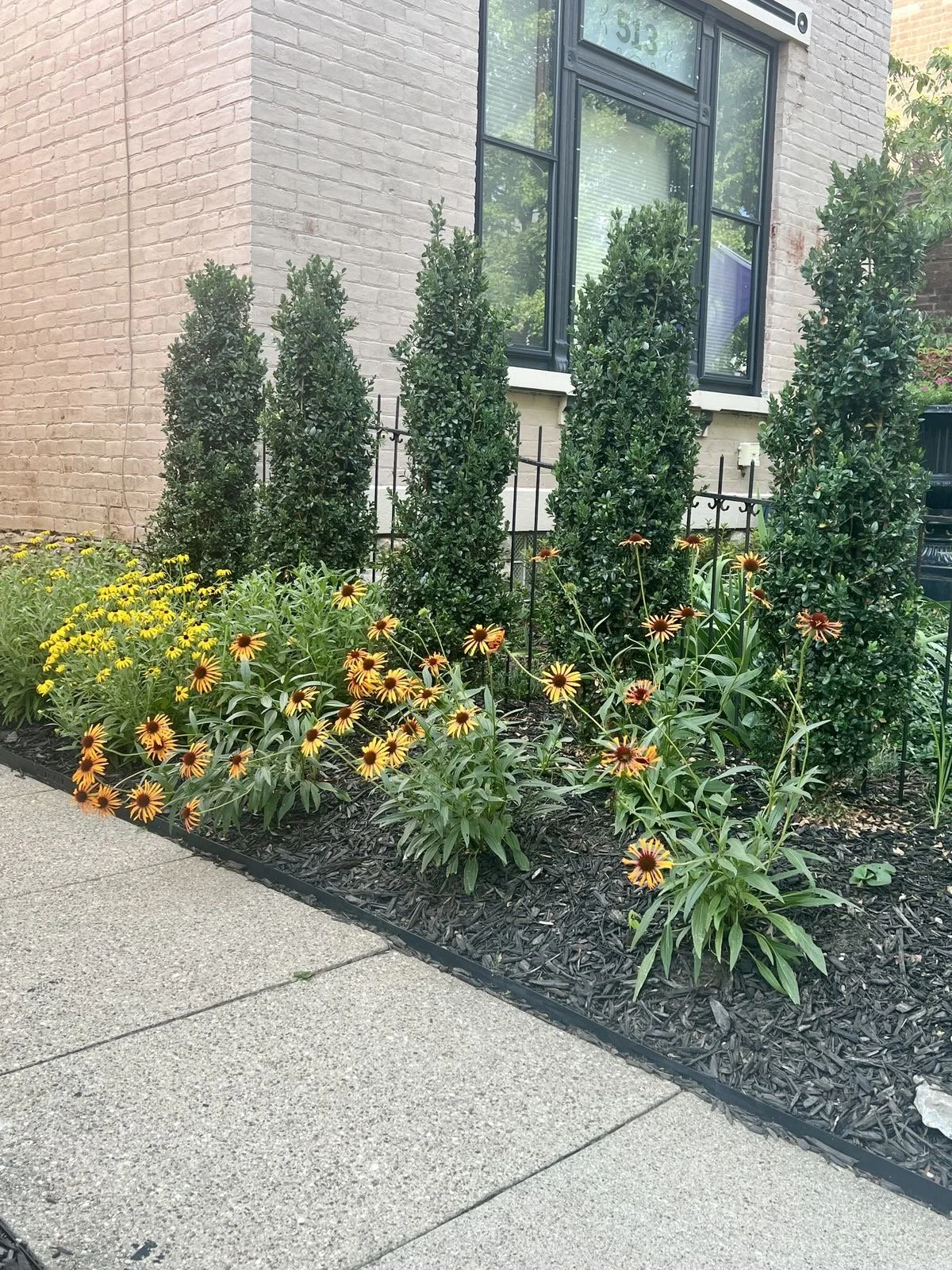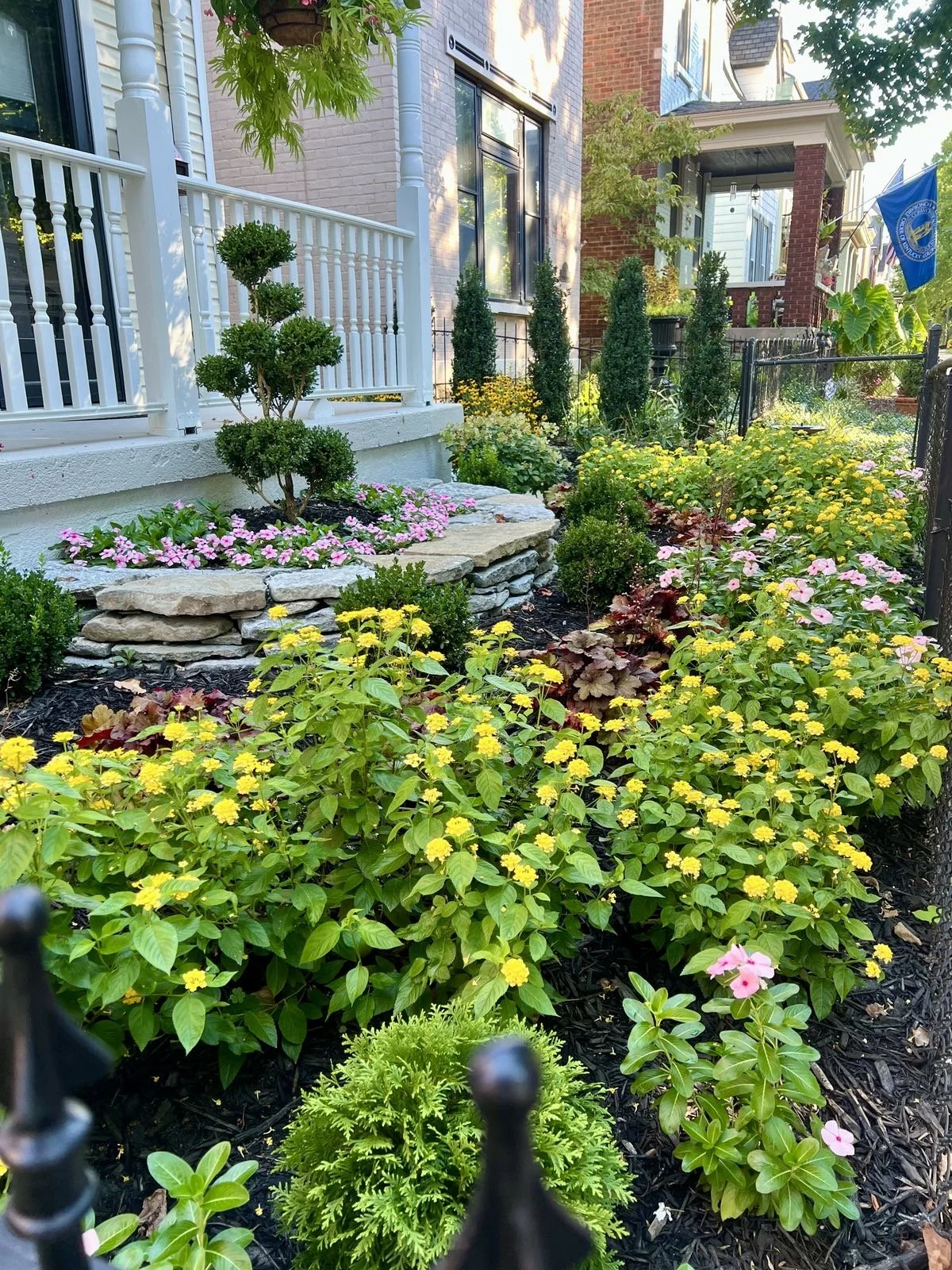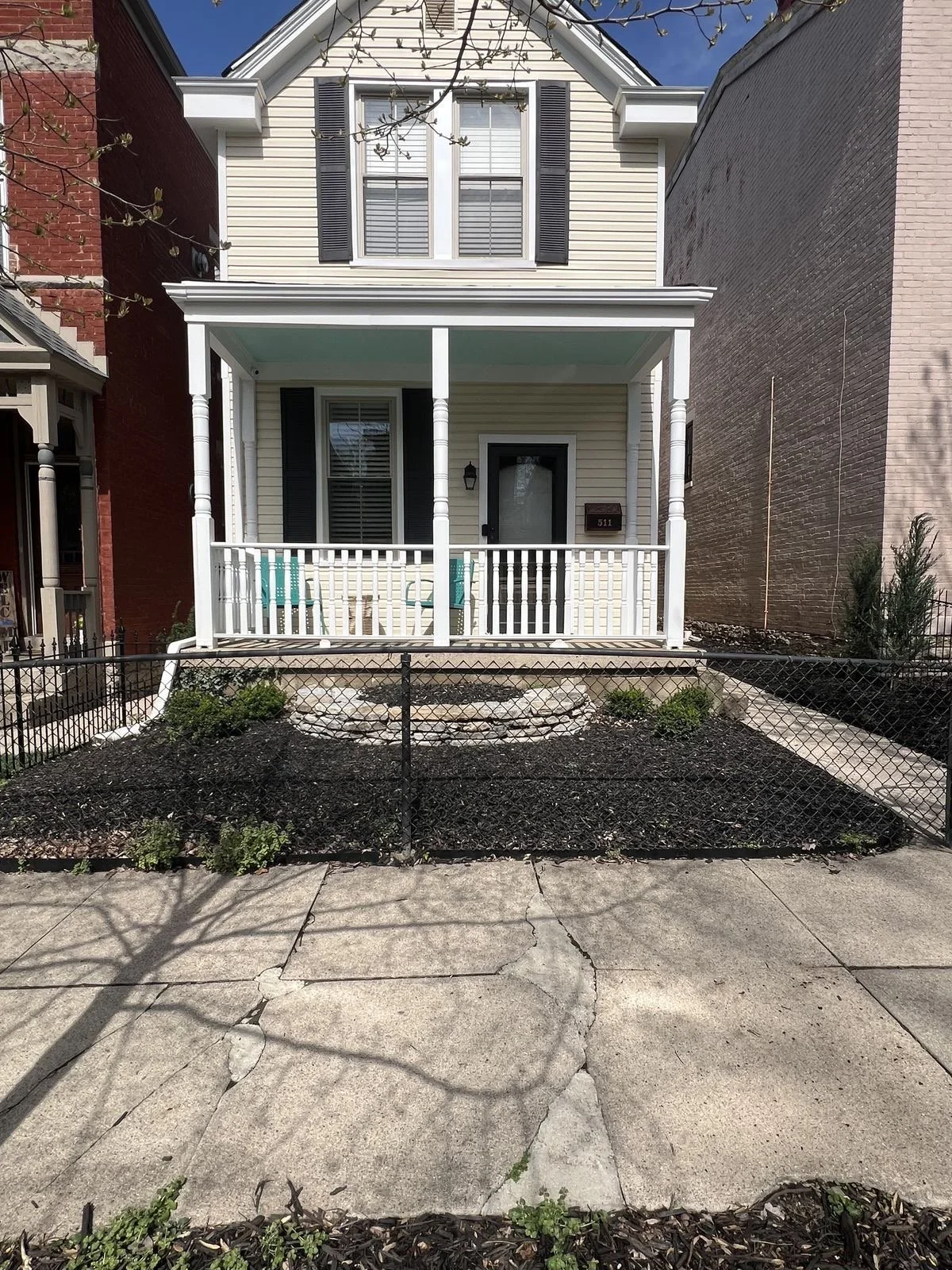Citrus Palette Garden
Choosing a non-traditional color palette
One of the easiest ways to ensure your garden looks harmonious and well designed is to limit your color palette. l always recommend to my clients that they use no more than three colors in their space. Whenever possible, it also makes sense to coordinate the flower colors with the house color.
Oftentimes people will choose a cool color palette of pinks, purples, and whites or a warm palette of reds, yellows, and oranges. For this project, I suggested that we try a non-traditional pink, yellow, and orange combo, evoking the colors of grapefruit, lemons, and oranges, while complementing the pale yellow house. The clients agreed and I created the design depicted below.
The clients are a busy working couple who wanted to achieve the following with the new design:
Attract pollinators
Create an evergreen screen for privacy with the neighbor
Ensure season long color
We were able to achieve those goals by choosing many native perennials which bloom at various times, from Hellebores in March to Rudbeckia in August, supplemented by colorful annuals. Echinacea and Rudbeckia flowers also attract bees and butterflies, while their seeds provide food for the local Goldfinch population. A row of elegant columnar boxwoods create privacy, allowing the owners to enjoy the front porch seating area.
We started with a nice hand-stacked stone wall and several existing boxwoods, including a cloud pruned topiary which serves as the year-round focal point for the garden. Otherwise, we had a mostly blank canvas.
